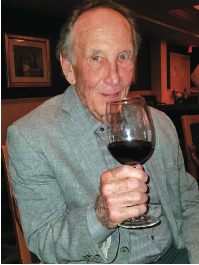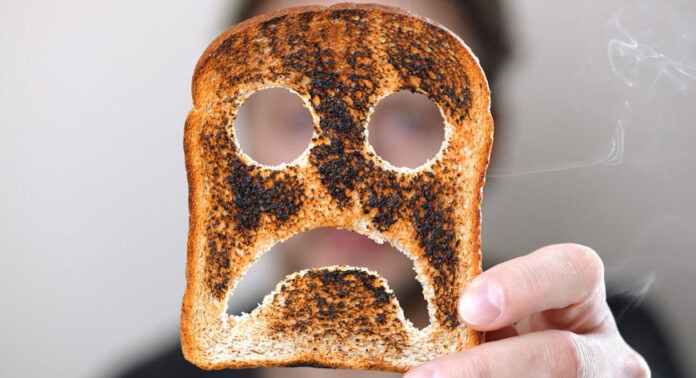S.W AND RICH HERMANSEN
Staff Writers
wine@lbknews.com
Ever order a classic dish from a restaurant menu or a classic drink from a bar menu and have it prepared in a way that ruins it? We understand that creative chefs and bartenders should have the freedom to put their own twist on a classic recipe. Here we are talking about gross changes that ruin the taste of a dish or drink.
way that ruins it? We understand that creative chefs and bartenders should have the freedom to put their own twist on a classic recipe. Here we are talking about gross changes that ruin the taste of a dish or drink.
We have a thing for Oysters Rockefeller. Jules Alciatore, son of the founder of Antoine’s Restaurant in New Orleans, created Oysters Rockefeller in 1899 when he could not find snails to serve as an appetizer. The recipe calls for fresh oysters on the half shell, a spicy sauteed greens mixture (say, fresh spinach with parsley, herbs, garlic and scallions) laced with Pernot, Pastis, or another anise-flavored liquor, and breadcrumbs mixed with grated Parmesan or Romano cheese. The greens top the oysters in the shell and the breadcrumbs on top of the greens, all toasted under a salamander or broiler oven and served.
Recently we have ordered Oysters Rockefeller at different restaurants and, for reasons that would never occur to us, they have served them covered with a thick layer of sticky cheese. This variation in the classic recipe makes it taste like, well, a Mozzarella cheese pizza with oysters and spinach buried underneath.
We have found it even more common to have enchiladas in Mexican restaurants served with a topping of thick layers of sticky cheese. So much so that very few customers know today that a classic cheese enchilada has a filling of shredded onion mixed into soft cheese like Oaxaca (Quesillo) or Asadero. Wrapping this mixture in a tortilla dipped in a simmering sauce stays soft when heated and does not stick to the tortilla. The classic recipe calls for a red sauce with or without meat to be poured on top when served, definitely not a layer of sticky cheese.
Even pizza suffers from having far too much sticky cheese on top (or in some cases buried in the crust as well). A one-fifth serving of a sixteen-inch pizza with a heavy cheese topping gives you the calories and fat in 12 slices of cheese on a toasted cheese sandwich (720 calories and 34 grams of fat). That’s not counting fatty meat toppings. Consider that unhealthy to say the least.
Too much cheese overwhelms the tastes that other ingredients add to a classic dish. It quells hunger pangs for a time, but contributes to health problems such as obesity, diabetes, and digestive issues.
Similar to the cheese topping problem, the overuse of breading in classic fried foods combined with overcooking ruins dishes such as fried shrimp, oysters, softshell crabs, fish filets, and whole fish. Thick coatings of egg batter require longer time to cook in the skillet or deep fryer. The finished product has a barrier of batter that literally has to be stripped away to get to the main ingredient of the dish. A classic recipe for fried foods specifies a light coating and a minimal time in the skillet or fryer.
The too much cheese topping and heavy fried batter examples often occur when chefs are trying to hide inferior or less than fresh ingredients. A thick coating of bland cheese will hide off tastes and poor consistency. A thick crust will have the same effect pm humans that hush puppies have on dogs.
Many other examples of classic recipes ruined arise when bartenders and chefs cut corners to reduce costs or speed up order processing:
– Craft cocktails made with anything other than fresh orange, lime, lemon, grapefruit, papaya, guava, or mango juice.
– Reheated pasta or the wrong pasta shape for a dish.
– Chicken or sausage in seafood gumbo or fish chowder adds a greasy layer that smothers the briny edge.
– Sauces heavy with cornstarch in Asian dishes.
– Limp and greasy French fries.
– Green tomatoes machine sliced instead of ripe tomatoes sliced by hand.
– Cool Whip on fresh baked pies instead of real whipped cream.
– Soggy bacon with eggs.
– Processed chicken and turkey lunch meats in place of sliced from roasts.
– Fructose cola instead of cane sugar cola in a Cuba Libre.
– Crab cakes outside Maryland, DC, and Virginia (too many bad examples).
Our list has grown too long to add more to it at this time. You may have your own items to add, or disputes about what we have included. We invite feedback.
S. W. Hermansen has used his expertise in econometrics, data science and epidemiology to help develop research databases for the Pentagon, the National Institutes of Health, the Department of Agriculture, and Health Resources and Services. He has visited premier vineyards and taste wines from major appellations in California, Oregon, New York State, and internationally from Tuscany and the Piedmont in Italy, the Ribera del Duero in Spain, the Barossa Valley and McLaren Vale in Australia, and the Otego Valley in New Zealand. Currently he splits time between residences in Chevy Chase, Maryland and St. Armand’s Circle in Florida.
Rich Hermansen selected has first wine list for a restaurant shortly after graduating from college with a degree in Mathematics. He has extensive service and management experience in the food and wine industry. Family and friends rate him as their favorite chef, bartender, and wine steward. He lives in Severna Park, Maryland.

